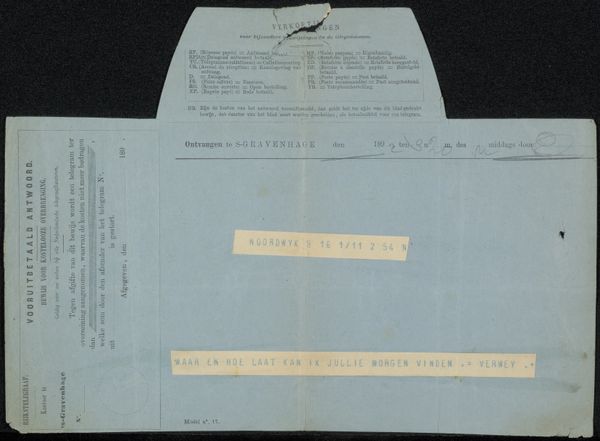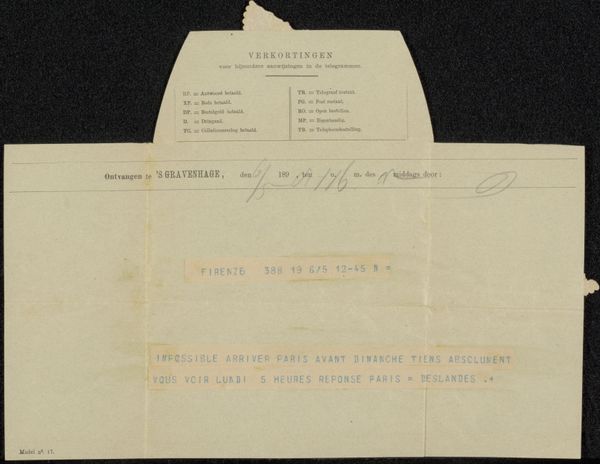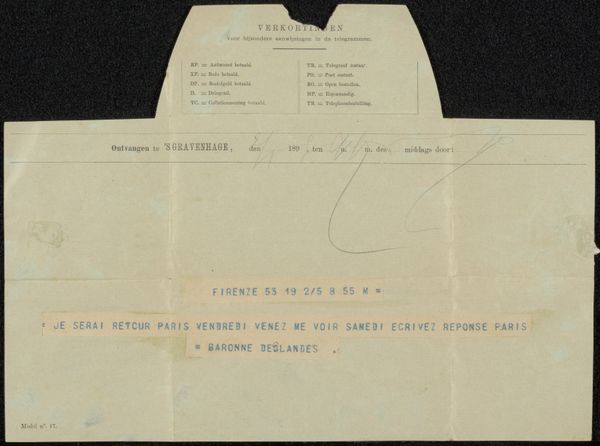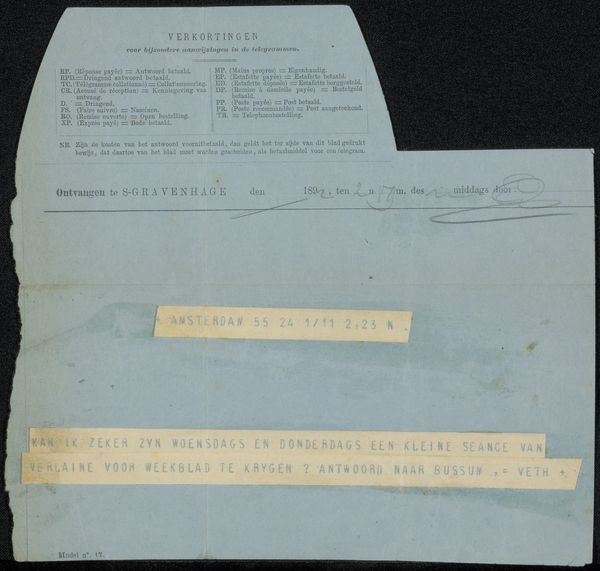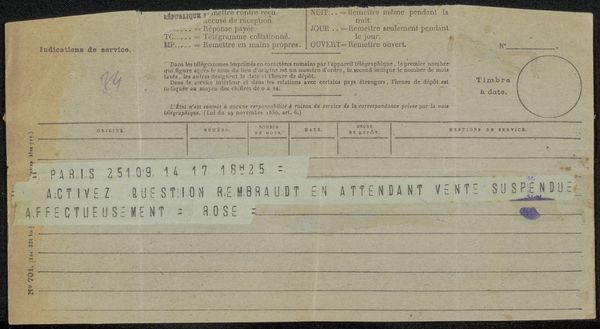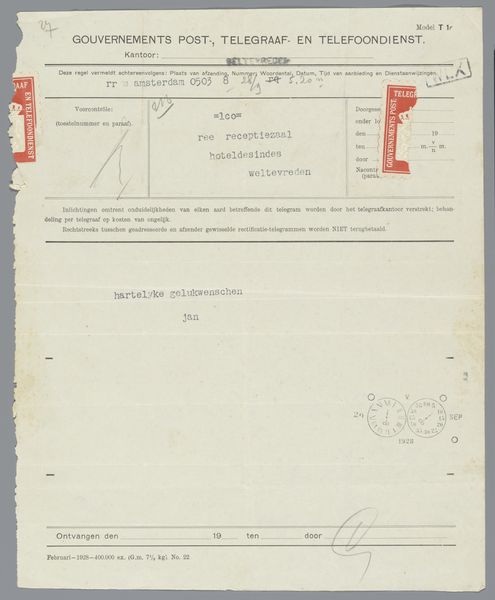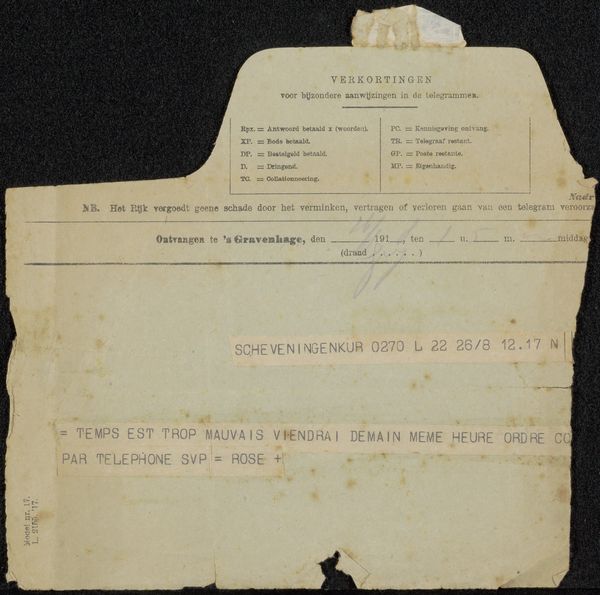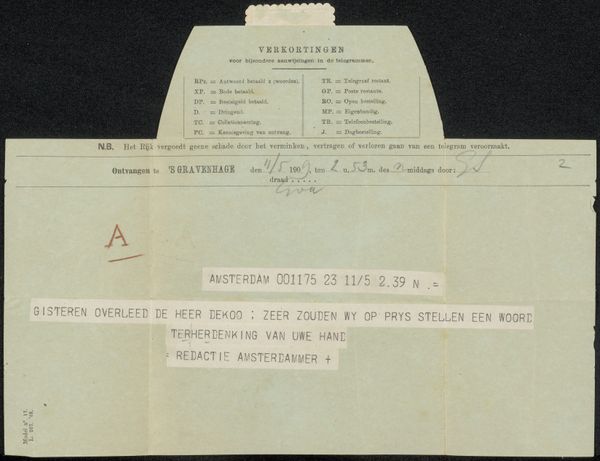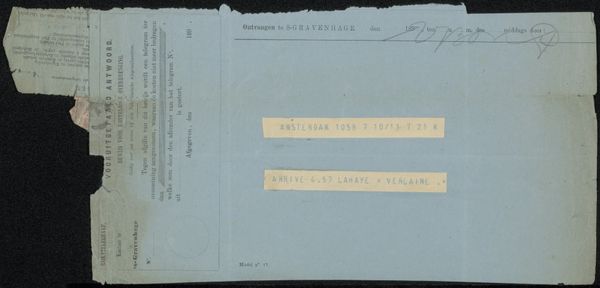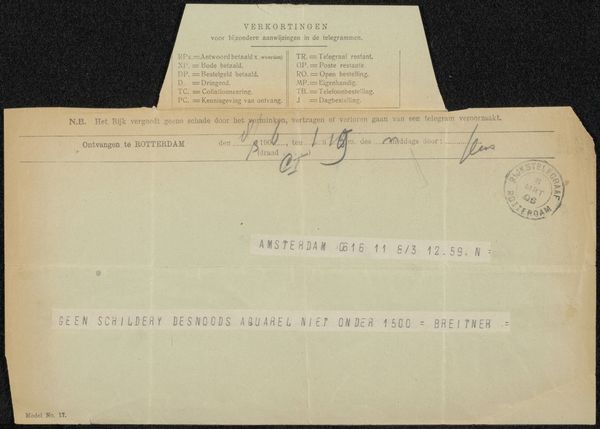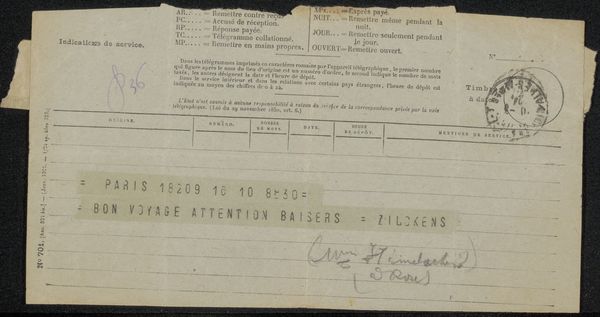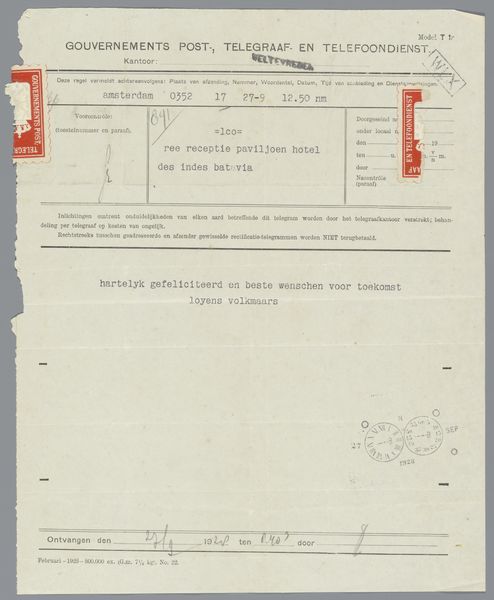
print, textile, paper
#
aged paper
# print
#
appropriation
#
textile
#
paper
Copyright: Rijks Museum: Open Domain
Curator: Here we have Jacobus George Robbers' work, "Telegram aan Philip Zilcken," possibly from 1897. It appears to be a printed document on paper, likely an actual telegram form. My immediate reaction is the starkness. The age of the paper lends it a ghostly feel. Editor: Ghostly is apt, considering the era and what a telegram represented – urgency, news traveling quickly through infrastructure. Looking closely, I am struck by the paper itself. The creases, the folds – the physicality hints at its journey. How readily would Robbers have encountered this technology and adapted it? Curator: A fantastic point. Telegrams at the time were the vanguard of communication, impacting how people experienced distance and immediacy. Seeing a noted person use this humble form grants a certain appeal. It's also rather bureaucratic in its layout and the dense columns of text! One might read that as symbolizing order or rigidity. Editor: Yes, the structure feels undeniably institutional, yet there's something subversively mundane about turning this mass-produced communication device into an art object. Also notice how the handwritten aspects blend with the machine print—each emphasizes the other. What was Robbers seeking to highlight by presenting an instrument for a brief, possibly informal note as art? Curator: It also speaks to the materiality of communication—the textures of paper, the starkness of print—as essential to how we comprehend messages. What do you mean when you say the writing merges? Editor: Exactly, and that texture signifies authenticity or validity. Also, look at the printed forms in combination with their fields where dates, names, or addresses need to be inserted by hand. Robbers does the inverse by typing messages. So a relationship arises which then fades into each individual element to reinforce this moment in time that's fading from memory yet being displayed, for an audience, to analyze and remember, and possibly connect. Curator: Fascinating! Robbers, by preserving and displaying what would've been a rather ephemeral medium of interaction, makes the technology meaningful again and displays his creative intent through typography. Editor: It feels quite contemporary in a sense, foreshadowing our digital age where snippets of written communication gain unexpected, lasting significance and artistic attention. Curator: Absolutely. Thanks for offering a different perspective; I see how it resonates much more with how communications are exchanged today. Editor: And I feel much better considering that what's been preserved on the physical document may no longer bear any meaning in today's fast and readily available sources.
Comments
No comments
Be the first to comment and join the conversation on the ultimate creative platform.
